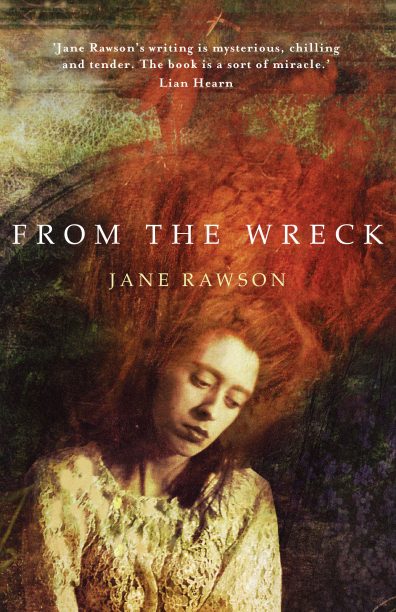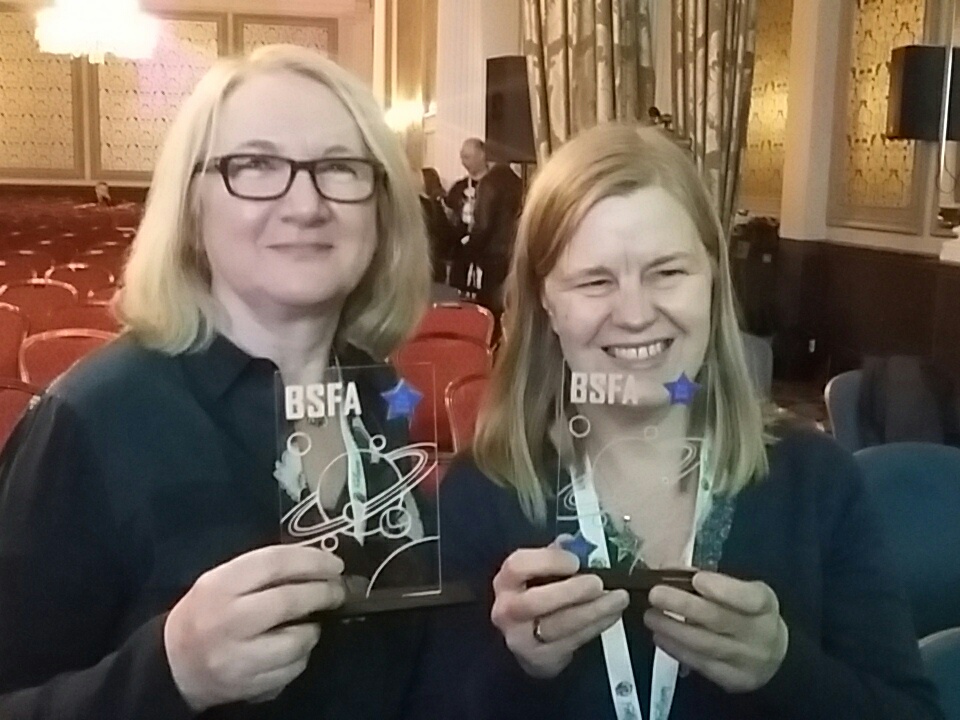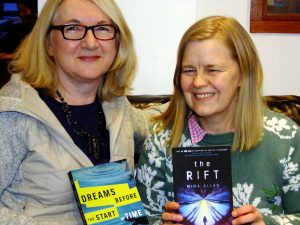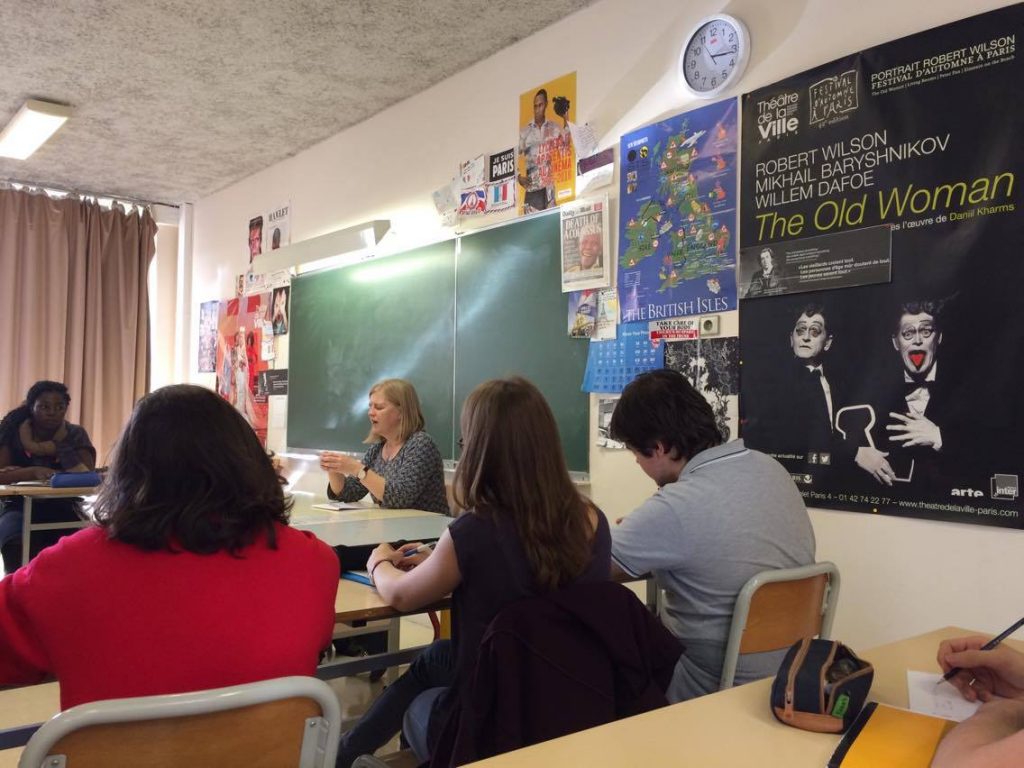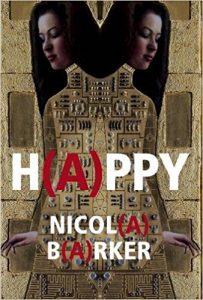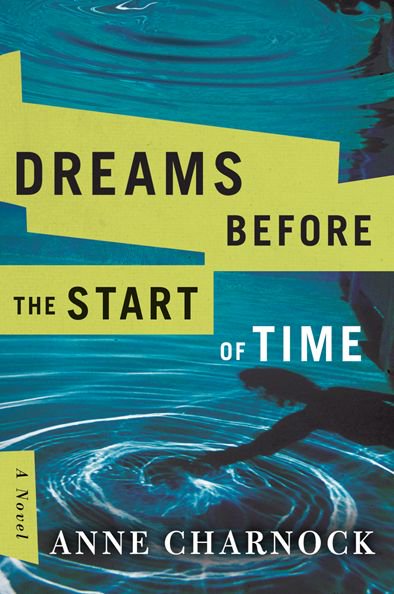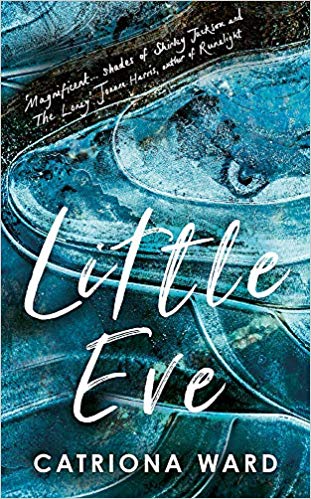 In celebration of Hallowe’en, here’s the interview piece I put together for Black Static #65 about Catriona Ward’s scintillating second novel Little Eve – your Hallowe’en reading, sorted!
In celebration of Hallowe’en, here’s the interview piece I put together for Black Static #65 about Catriona Ward’s scintillating second novel Little Eve – your Hallowe’en reading, sorted!
*
Little Eve: an interview with Catriona Ward
When I heard that Catriona Ward had a new novel coming out, I felt nervous as well as excited. Her debut had been exceptional. Set on Dartmoor during the tumultuous apotheosis of the Victorian age, Rawblood was a philosophical drama disguised in the costume of high gothic, exploding on to the British horror scene in 2015 as an instant classic. Rawblood expertly combined elements of the traditional ghost story – the isolated house, the family curse, the doomed quest for arcane knowledge – with a deeply felt social insight that, together with Ward’s expressive, lyrical writing and passion for story, set it apart from other essays in period horror and signalled the arrival of a major talent.
By her own admission, Rawblood was for Ward a passion project. Inspired by the landscapes that defined her childhood and the stories and novels that helped to form her both as a thinker and as a writer, her debut took more than seven years to write and went through dramatic evolutionary changes in the process. The end result reveals none of the doubts, reversals and sheer hard graft that would inevitably have accompanied its journey into print. In terms of its language, style and formal innovation, Rawblood feels so fully achieved it is difficult to believe it is a debut. But there is more to Rawblood than a great story, professionally told: the book also comes across as deeply personal, a genuine culmination of a writer’s vision. This is rarer than you might think, especially in genre fiction, where new writers are coming under increasing pressure from agents and editors to deliver novels that they feel will satisfy market expectations.
Rawblood found considerable success, both with genre aficionados and also with a more mainstream audience, readers who might not normally have felt entirely comfortable picking up a horror novel. I was proud to be a member of the jury that awarded Rawblood the 2016 British Fantasy Award for best horror novel. I was eager to see what Ward would produce next, yet at the same time I felt anxious for her. An author’s first book is written largely in isolation, and in most cases is not subject to a deadline. The follow-up – the ‘difficult second novel’ – is another matter. You won’t normally be given seven years to write it, for a start. And if you’ve done your job properly the first time around as Ward did, you might also have acquired some fans, all excitedly scouring the internet for news of your next publication date. You’re not alone any more – a fact that is deeply gratifying but also a pressure. Suddenly, there is a weight of expectation that, inevitably, some writers will struggle to fulfil.
The good news for all of us is that Catriona Ward has fulfilled it, in spades. Her second novel, Little Eve, is just as good as Rawblood, if not better. I was lucky enough to be sent an advance proof, and am delighted to report that for the six hours or so it took me to read it, I quite literally did nothing else. This does not happen often.
For writers, the increasing tendency to relate to books as text to be analysed, scrutinised and criticised can make it difficult to suspend disbelief, to recapture the pure reading pleasure that characterises our encounters with the novels and stories that made us writers in the first place. While reading Little Eve, I truly felt myself to be a reader again.
The stylistic achievement that marked out Rawblood as something special is equally assured. Ward’s sense of place, her rapturous, almost dream-like evocation of characters in a landscape is immersive and bewitching. But for all its beauty of language, Little Eve works equally successfully as a page-turning thriller. Again, this does not happen often, and Catriona Ward should be congratulated on producing another novel that will be beloved of both seasoned horror fans and more mainstream literary readers – those unfortunate souls who think they don’t even like horror – alike.
The action of Little Eve takes place over a period of some thirty years, from the penultimate year of World War One until the immediate aftermath of World War Two. We move some six hundred miles north, swapping the Dartmoor wilderness of Rawblood for the village community of Loyal and the small offshore island of Altnaharra, north of Inverness, in the Scottish Highlands. The island is home to John Bearings, a man who came north in search of sanctuary for himself and his adoptive ‘family’, a group shunned by the local community on grounds of their supposed immorality even as they are pitied for their material poverty. Early on New Year’s Day 1921, a local man, Jamie McRaith, makes a bloody discovery: John Bearings and his acolytes have all been murdered. The one survivor, a young woman named Dinah, insists that the murderer is her adoptive sister Evelyn, known within the family as Little Eve.
As we move back and forth along the narrative timeline, we discover that the story of what really happened on Altnaharra is stranger and more terrible than it initially appears. It is also far less straightforward. Little Eve is compellingly readable and rich in sonorous gothic sensibility. It is also a thought-provoking indictment of the British class system, the position of women in Edwardian society and the wilful blindness and skewed morality of enclosed communities. Ward has created an unforgettable cast of characters. Her vision is unflinching, the story she tells is wrenching and raw, which is not to belie the powerful lyricism of her writing. On finishing the novel, I found myself buzzing with theories and suppositions, alternative trains of thought. I sat down and wrote to Catriona with some questions about Little Eve, which she has been good enough to answer for us here.
NINA ALLAN: The first thing we notice about Little Eve is its setting. As with the Villarca house in Rawblood, the island of Altnaharra is an isolated outpost in an already inhospitable location. The Dartmoor of your first novel is a defining presence, and you have spoken many times in interview of the importance of Dartmoor in your personal and in your writing life. Both the village of Loyal and the island of Altnaharra are imaginary, yet the sense of place that permeates Little Eve is as vivid and as vital to the story as the real places of Rawblood. Why did you choose to set Little Eve in the Scottish Highlands, and what came first, the location or the story?
CATRIONA WARD: Dartmoor is deeply embedded in Rawblood, and vice versa. It’s part of my emotional landscape and the setting of many of my dreams. I wanted to infuse the text with that. Longing for and memory of place is such an important part of Rawblood, the novel is an extended hymn to home.
I don’t know the Highlands in the same intimate way. It was a lack of familiarity that Little Eve needed. There’s an unease to the characters’ relationship with their setting. The Children are strangers in Scotland, invaders and also prisoners. Also, Highland place names are so wonderful – some I invented, like Loyal, but others like Tongue, Altnaharra and Ardentinny I merely borrowed. From the first and for all sorts of reasons, the idea for Little Eve was inextricable from the Highlands setting.
NA: As well as the gothic elements, Little Eve also involves some of the tropes of classic golden age detective fiction. In Christopher Black we have the obsessive, ostracised investigator, whose career has been ruined by his relentless quest for the truth about John Bearings and his adopted family. The closed, intimate circle of suspects, the theme of mistaken identity – the spirit of Wilkie Collins’s The Woman in White hovers over this novel – are also key elements, with the truth about the murders remaining in question right up until the end. Do you enjoy detective fiction, and to what extent did writers like Wilkie Collins, Edgar Allan Poe and even Agatha Christie provide inspiration for Little Eve?
CW: Wilkie Collins is a big inspiration. The Moonstone is both an excellent gothic novel and the original detective story. Detective fiction is the most reassuring genre of all – it provides a problem with a solution and a culprit – an answer. I began Little Eve with a fully evolved detective plot, intending it for a conventional mystery. But you don’t always control what you write. It became something stranger. Agatha Christie meets The Wicker Man, maybe? Crime literature in general has some things in common with the gothic – both genres ask the reader to play detective, to follow a thread to a dark truth. I wanted to draw out some of those commonalities in Little Eve.
NA: The most sinister character in Little Eve is undoubtedly John Bearings himself, yet as readers we always see him at one remove, through the eyes of other, unreliable narrators. Was it a conscious decision of yours, to keep ‘Uncle’ and his monstrous crimes partly obscured by shadow, and if so, why?
CW: I made a considered decision to deny him a narrative voice. John Bearings doesn’t deserve any time in the light. It’s a feminist act to exclude him from the narrative. Or perhaps I just didn’t want to inhabit him! In the end I found that Little Eve isn’t about him at all, really. It’s about how the women and children under his control suffer and try to survive. It’s about ingenuity, about kindness blooming amidst horror and about faith, though not the kind he peddles.
NA: The position of women in Victorian and Edwardian society is a dominant theme of yours, both in Rawblood and in Little Eve – indeed it could be argued that these novels represent a reclaiming of the gothic for the female voice. Have you ever found yourself frustrated by the way women are portrayed in horror fiction? How far is the balance being redressed now in contemporary works?
CW: I am frequently frustrated by how women are portrayed in all sorts of genres! Horror still relies heavily on portrayals of vulnerable women. There’s a prurience to a certain type of horror gaze. But I think the gothic sidesteps that quite cleverly and has always naturally lent itself to the female voice. It’s a knowing, sometimes quite wry genre that illustrates the horror of power, usually male power. I wish that as a society had we had outgrown the need for such fictional mirrors to be held up to life… but we definitely haven’t.
NA: Scientific explanations for supernatural phenomena, and the apparent conflict between faith and rational argument form key plot elements in both Rawblood and Little Eve. This conflict and the instability of its resolution has always loomed large in gothic writing – Mary Shelley’s Frankenstein springs immediately to mind, so does R.L. Stevenson’s The Strange Case of Dr Jekyll and Mr Hyde. Do you see horror and science as natural bedfellows, and why might this be?
CW: Horror and science resemble one another so closely, at times. The history of scientific discovery, particularly in medicine and pathology, is truly horrible. James Marion Sims developed pioneering gynaecological techniques still used today – by performing experimental surgeries on twelve slave women without anaesthesia. Only three of the women’s names are recorded – Anarcha, Betsy and Lucy. We should remember them.
The idea of a dialogue between the rational and supernatural, or faith and science, is part of the bedrock of gothic literature, as you say. But these are not discrete concepts. They all bleed into one another – and they are all attempts to circumvent mortality. The gothic recognises that all these strategies will ultimately fail. It looks uncomfortable realities in the face – which is why it’s such a powerful genre. It goes to the heart of things.
NA: What draws you particularly to historical fiction? Do you see horror essentially as period drama, or might you feel tempted to relocate to a contemporary setting at some point in the future?
CW: Historical fiction can serve as a lens, casting a particular light on the now. Period drama helps us parse today. And I feel a need to distance myself from my characters’ situations. Writing is so intimate and the further I remove the narrative from my own external concerns, the freer I feel to explore my protagonists’ inner ones. A good way of doing that is to embed the novel deeply in another time. But I’m trying something new, at the moment – I’m in the midst of my third novel, which is contemporary, and told from the point of view of a serial killer’s cat. I am really enjoying writing as a cat.
NA: You have spoken of your admiration for classic gothic texts such as Charles Maturin’s Melmoth the Wanderer and Charlotte Bronte’s Jane Eyre but who, for you, are the most exciting voices in contemporary horror?
CW: There seems to be horror in all good art – some of the authors I’m drawn to might not be perceived as strictly ‘genre.’ Kelly Link manages a powerful alchemy, mingling magical realism with everyday horrors and using the language of genre. I can never quite work out how she does what she does. Gemma Files is wonderful, as is Michelle Paver, and Lauren Beukes. Justin Cronin’s the Passage saga is epic and immersive – it was a wrench to leave that world, at the end. I was glued to my seat during ‘Get Out’ – what an original idea, brilliantly executed.
(Catriona Ward’s Little Eve is published by Weidenfeld & Nicholson)

